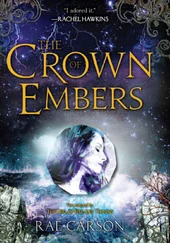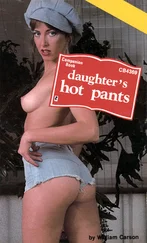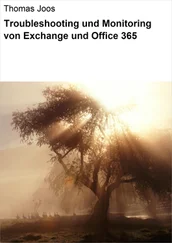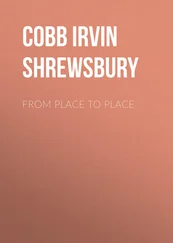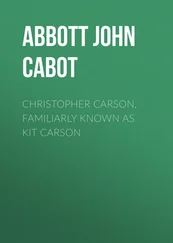Kilpatrick read on, skimming here, dwelling on some passages there, trying to make sense of it. The book consisted of three sections: X, a first-person narrative; Y, a third-person narrative concerning a Gabriel Kilpatrick; and K, alternating between first-person and third-person as the protagonists of X and Y morph into someone called K and the events detailed in section X are revisited from his point of view. The last section seemed unfinished; or if it was finished, it was inconclusive. Common to all three sections was a fascination with memory, paranormal phenomena, surveillance, questions of identity, and the bombing campaign conducted by the Provisional IRA in Belfast in the latter decades of the twentieth century. For example:
Treading the glass grit in Corporation Square, Kilpatrick was reminded that it had been the scene of a bomb two days ago. There was some dispute as to whether the intended target was the Imperial Assurance offices or the Ulster Tea Importers next door. Whatever the case, the effects, as televised on that evening’s Scene Around Six , had been spectacular. The planting of the device, in a Volkswagen estate car, had coincided with the arrival of a Hercules truck delivering a consignment of Irish Breakfast tea. The occupants of the Hercules were forced at gunpoint to abandon their vehicle. The terrorists made their getaway in a second car, a Ford Capri. The Volkswagen exploded fifteen minutes later, causing extensive collateral damage to the structure of the immediate environment, including the Hercules truck and its cargo. Kilpatrick recalled the shudder of the camera’s field of vision as it recorded car, truck and tea-chests disintegrating with a boom and whoosh, an atomic cloud of tea like starlings boiling upwards, sifting, settling on the twisted shrapnel already scattered like bits of art about the wide expanse of Corporation Square.
John Kilpatrick, reading this passage, realized that it was one of the many incidents — how many scores, how many hundreds? — he had forgotten. One lost count as one incident followed another in a series of amnesiac elisions. Yet everything was watched, overheard, recorded:
Electronic bugs — parasitic transmitters, Trojan Horse transistors, synaptic grafts or buds — were planted everywhere: in phones and door-handles and light fitments, spiked like hat-pins into the backs of hotel room curtains, masquerading as martini olives in hotel bars, lurking in the ceramic chain-pulls of hotel toilets. In smoke-filled back rooms the glint of an exposed floorboard nail was enough to invite suspicion. Cameras were concealed in smoke detectors, behind bar mirrors, and in bar optics, or were made to look like personal accoutrements: badges, buckles, brooches, bracelets, powder compacts, cigarette lighters. Taking into account that any conversation might be overheard, any covert action photographed, the players conducted conversations and actions accordingly, talking of this when they meant that, doing that instead of this.
And John Kilpatrick thought he remembered a conversation with John Bourne, who had playfully suggested that every new radio bought in Belfast was liable to be bugged: that it was both receiver and transmitter. But even if it were true, that wouldn’t apply to Bourne’s vintage EKO. So he had thought at the time. In hindsight, he wasn’t so sure. One thing was certain: there was more to everything than met the eye.
I felt weak at the knees. I cleared a mound of debris from the old leather armchair where Harland would often sit to contemplate a work in progress; and, as I sat down and rolled a cigarette, I remembered how he’d offer me tobacco and papers, and I would roll one, pass him back the makings, and he would roll one too, the paper smeared with pigments from his hands; and when he lit up, the paper crackled and I thought of smoke being drawn into his lungs in a swirl of multicoloured particles. He’d look at the painting as I looked at it too; we would exhale together, and I wondered if we saw the same thing. I looked at the passage in his journal again. How could he have written these words of mine? for I had written them long after he had disappeared; he could not have read my book. Indeed, no-one but myself had read it. But then, looking at it again in Harland’s chair, it seemed there was something not quite me about the style; it seemed like another voice, and then I remembered. I saw myself sitting at my desk with a 1950s book on neuroscience, transcribing bits of it into a notebook. The mystery was solved — obviously, he had read the book before I did, and he too had thought it worthwhile copying, for whatever purpose of his own. We had both indulged in a piece of appropriation. And yet a suspicion lingered that Harland had been watching me, for whatever purpose of his own.
I remembered the time I had gone to the toilet on the next landing down and had returned to see Harland standing by my jacket where it hung from a hook on the wall, going through the pockets. He had passed it off well — just admiring the material, old man, nice bit of tweed, where did you get it? And he drew my attention to flecks of heathery purple and sky blue and moss green, things I’d never really seen before, and I put the matter to one side. Until the next time, and the next, when he had let slip bits of information about my past or present circumstances, details of my life he could not have known; yet he always had a plausible story, or I would be loth to pursue the matter further, and I would once more put my suspicions to one side, giving him the benefit of the doubt. Only after he disappeared did I revisit these occasions, piecing together a narrative in hindsight, in which Harland was not all that he seemed, or all that I had taken him for.
I finished the cigarette and ground it into a drift of photocopied images. I went over and stood before the blemished dressing-table mirror. I looked like a ghost of myself. I opened a drawer at random. There was a box in the drawer. A box similar to the Japanese trick-box I had solved that morning, its surface covered by a labyrinth of marquetry, but a good deal bigger, some five inches by four by four. I looked at it closely but again I could see no joins. I worked it over in my hands for a good few minutes, but I knew it would take me forever to open it. I knew Harland had kept a hammer and chisel, and I found them on a shelf under a pile of paint-clotted rags. I took hammer and chisel to the box and smashed it open. Inside were half a dozen Polaroid photographs, and again my heart gave a lurch. A year or two before I met Harland I had bought a Land camera — it was still in my attic — and for some months I had experimented with a series of self-portraits taken in a mirror, which I would then distress with an array of implements — toothpicks, keys, old toothbrushes, swatches of needlecord, dragging and scumbling the still wet emulsion of the print to produce an altered image of myself, more psychologically accurate as I thought. I had signed and dated each on the back. These images were indubitably mine. I had shown them to no one: after meeting Harland, my work had seemed naive, mechanical and derivative compared to his painting, and I never mentioned them. But this discovery put a new complexion on how things stood between us.
As I pondered the matter, the drift of papers at my feet stirred as if in a breeze. I shivered. I recalled that Harland had taken the attic room when he heard it had been used for seances for some three years after the First World War by the Goligher Circle, a group of spiritualists centred around one Kathleen Goligher, a medium who claimed to be in contact with those who had passed over to the Other Side, the dead that is, who would communicate through her by a series of paranormal effects. Harland had first come across the case in a book called The Psychic Structures at the Goligher Circle , published in 1921 by William Jackson Crawford, then a lecturer in Engineering at Queen’s University, Belfast, who had conducted a long series of elaborate tests on the Circle and was left in do doubt that the paranormal effects were genuine, that the world of the afterlife did indeed exist, and that those who dwelt there could indeed communicate to us by psychic rods extruded from the orifices of the medium’s body. The rods tapped out messages in a primitive Morse, displaying a range of acoustic effects whose magnitude varied in intensity from barely audible ticks to sledgehammer blows. At times they sounded like gunshots. The seance room would be lit by a red lantern, said Harland, and here he quoted from Crawford’s book: Why normal white light should prove destructive to physical phenomena is not fully understood, but an analogy with wireless helps to make it admissible. Light is the fastest vibration of the ether. Broadcasting practice demonstrates that the fast vibrations tend to nullify the slower vibrations of the radio waves as they are picked up by the wireless receiver. When the days are long and the sunlight intense, wireless reception drops down: this explains why broadcasts of cricket matches sometimes carry an accompanying charge of static, or fade from the air. With the oncoming of night reception improves again. It is probable that psychic vibrations are in the same position. The slowest light vibration is red, and its destructive effect far less. Sir William Crookes, testing the action of various light sources, found moonlight the least injurious to the phenomena. Says Crawford, said Harland. Of course it’s a load of bunkum, old man, a matter of cheap conjuring tricks, said Harland, any amateur magician could do the same. And he took a coin from his pocket and made it disappear before my eyes. It’s not the quickness of the hand that deceives the eye, it’s your own brain that deceives yourself. We don’t see what’s there, we make up stories about what we think we see. And he would touch on the notorious fallibility of eyewitness accounts, which when taken together suggest that each onlooker has seen a different event.
Читать дальше


